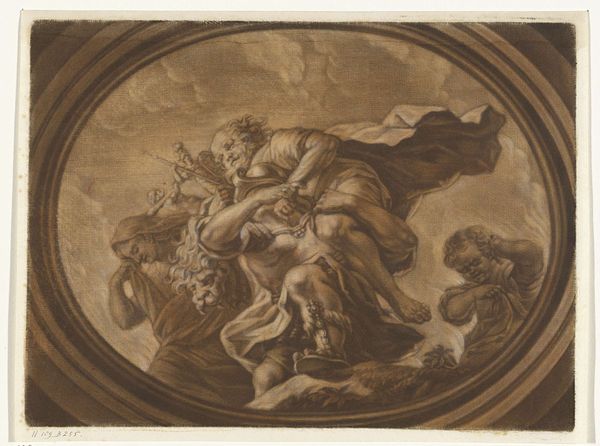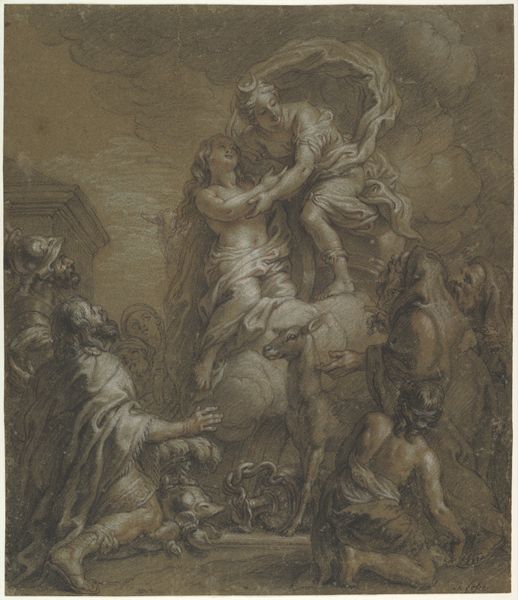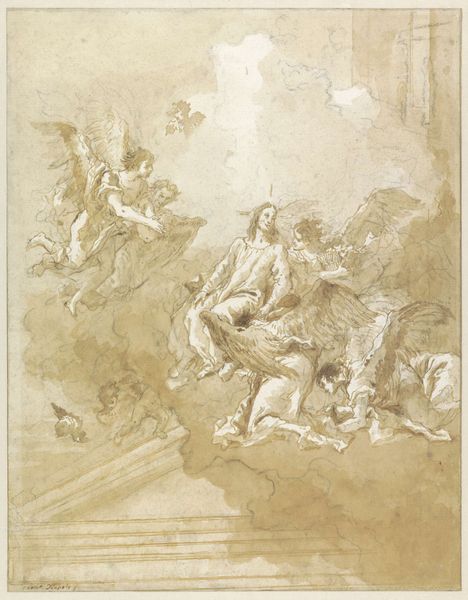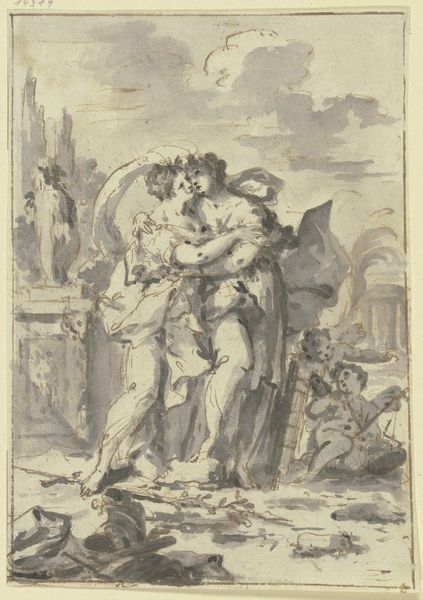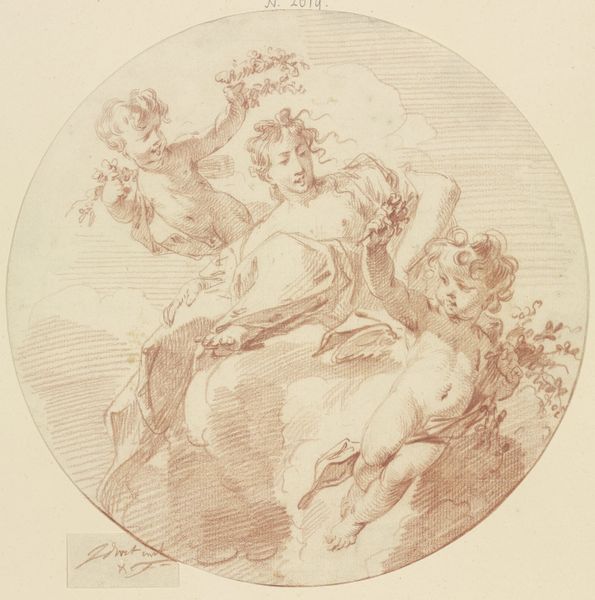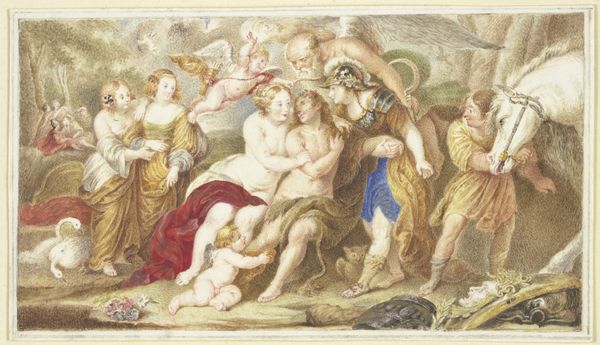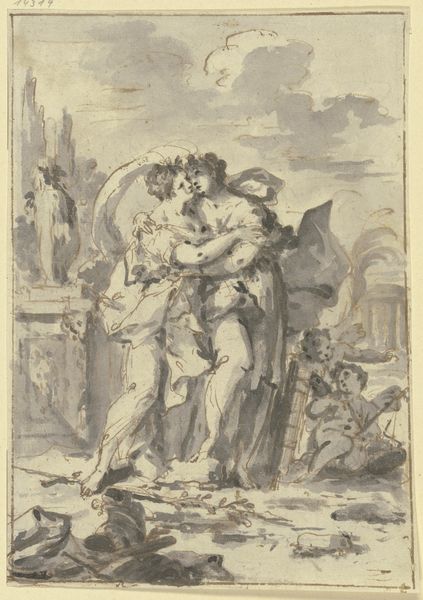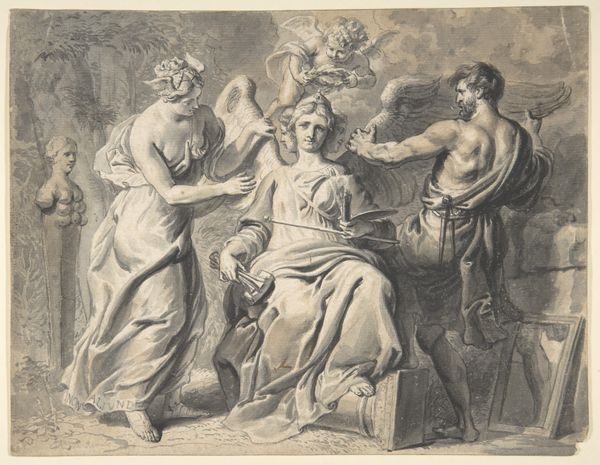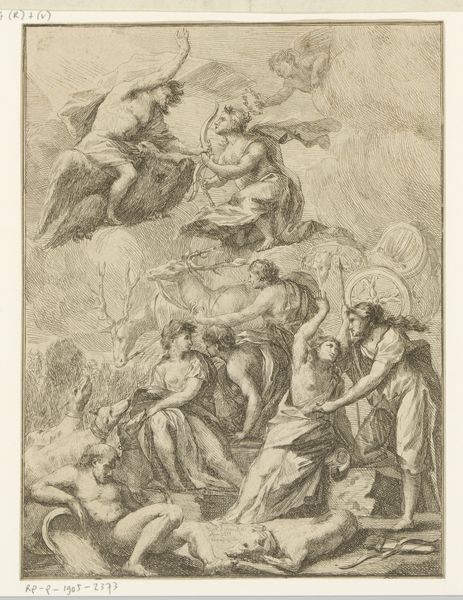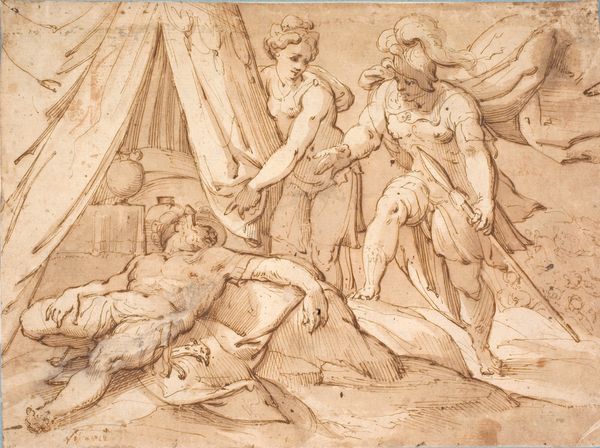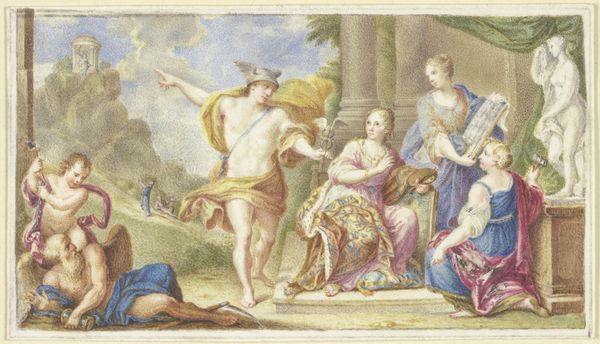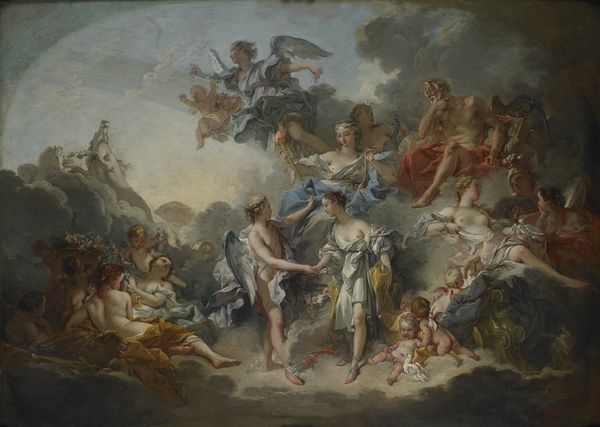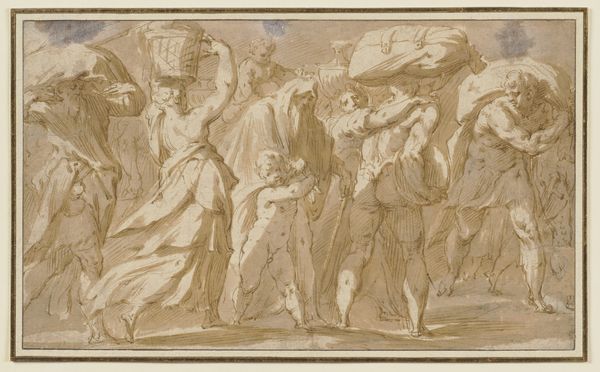
drawing, print, charcoal
#
drawing
#
allegory
#
baroque
# print
#
charcoal drawing
#
figuration
#
oil painting
#
charcoal
#
history-painting
#
academic-art
Dimensions: sheet: 9 5/8 x 12 11/16 in. (24.5 x 32.2 cm)
Copyright: Public Domain
Editor: Here we have Jacob de Wit’s “Apollo and Thetis,” likely from sometime between 1710 and 1754, currently residing at the Met. It seems to be a drawing, perhaps charcoal, with a wash. What I find interesting is the seeming softness, even intimacy, despite its grand subject matter and academic style. What do you make of it? Curator: Well, looking at the process itself, consider the sheer amount of labor involved in creating such a detailed drawing, likely intended as a preparatory sketch for a larger history painting. How does that labor itself contribute to its perceived value as ‘high art’? Editor: I hadn't considered the labor aspect so explicitly. So the act of making is crucial. Curator: Exactly. And think about the materials. Charcoal, a relatively humble medium, is used here to depict gods and goddesses. It makes me think of the economics involved in the making of art in the baroque. Does the choice of medium and technique democratize the divine or does it reinforce an established hierarchy through skilled craftsmanship? Editor: So the materials aren’t just neutral. The charcoal’s availability and the skill required become part of the narrative? It becomes commentary on society at the time? Curator: Precisely. Think about who had access to this kind of skill and who consumed the art made in this manner. Consider too that preparatory sketches, like this, often found their way into the market independent of the final painting. It complicates our understanding of production and consumption in this era, doesn't it? Editor: It does. So, even a piece that depicts mythological figures actually gives us a tangible glimpse into the economic and social structures of its time. Curator: Exactly. And hopefully, seeing it that way changes our perception, helping us appreciate the artwork's value from a different, but maybe more accessible point of view. Editor: I think it definitely does. Thanks!
Comments
No comments
Be the first to comment and join the conversation on the ultimate creative platform.
